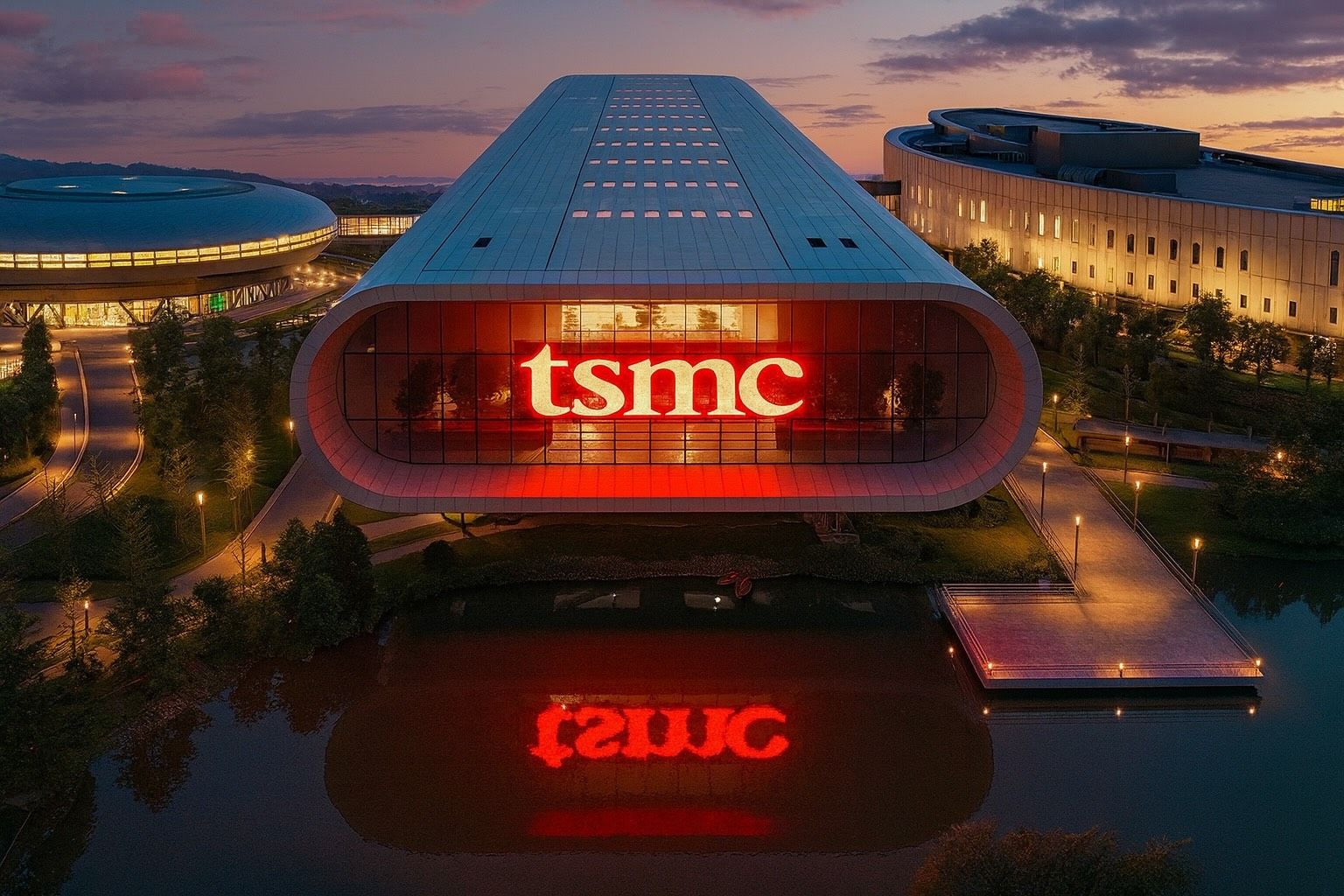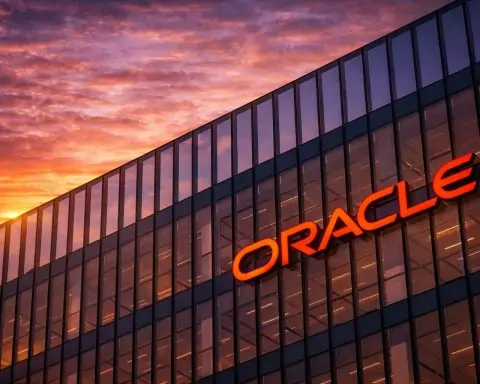- Blockbuster Q3: Taiwan Semiconductor (TSMC) reported a 39.1% jump in Q3 net profit (NT$452.3B) on surging AI/5G chip demand [1]. Revenue climbed ~30.3% YoY to NT$989.92B, beating forecasts [2].
- Bullish Guidance: CEO C.C. Wei said AI demand was “very strong – more strong than we thought” and raised the 2025 sales outlook to mid-30% growth [3] [4]. Reuters notes TSMC “posted a record quarterly profit and raised its annual revenue expectation,” underscoring robust demand from customers like NVIDIA and Apple [5].
- Historic Rally: TSMC’s shares are near record highs. The NYSE-traded ADR hit ~$307 intraday on Oct. 7 and traded around $299.84 on Oct. 17 [6] [7] (52-week range ~$134–311 [8]). That is about a 40–45% gain in 2025 (NT$ shares are also up ~38–40%), dwarfing broader markets [9] [10]. The rally pushed TSMC’s market cap to roughly NT$35 trillion (~US$1.1 trillion) [11].
- Analyst Optimism: Wall Street is mostly bullish. Morgan Stanley advised clients to “accumulate” ahead of the earnings report, and Bank of America lifted its price target to NT$1,600 (≈$330) citing TSMC’s pricing power [12]. The consensus 12-month price target is around $300–310 [13], implying modest upside. TipRanks reports 9 Buy ratings vs 1 Hold, with an average target ~$311 [14].
- Key Risks: Trade tensions and tariffs remain on investors’ minds. Taipei rejected U.S. calls to force a “50-50” split of chip output with America [15]. China has tightened export controls (e.g. chip tool and rare-earth restrictions) and even held military drills near Taiwan recently [16] [17]. TSMC is countering by spending heavily on overseas fabs (about $65 billion on three Arizona plants [18]) and will “monitor and plan for any possible impact” of U.S. semiconductor tariffs, said Wei [19].
Record Q3 Results Drive Rally
TSMC’s latest earnings confirmed the AI-driven boom in semiconductors. July–September revenue jumped to NT$989.9 billion (≈$32.5 billion) [20], about 30% above last year, and net income hit NT$452.3 billion [21] – both well above analysts’ estimates. High-performance computing (HPC) chips – used in AI servers – dominated the quarter, with the HPC unit accounting for roughly 57% of sales [22] [23]. Counterpoint Research analyst William Li commented that the “strong traction at 3nm as well as high utilization at 4/5nm” from orders by AI GPU and data-center customers directly drove these robust earnings [24]. CEO C.C. Wei echoed this, saying recent AI developments are “very positive” and that TSMC’s “conviction in the AI megatrend is strengthening.” He raised the company’s 2025 revenue forecast to the mid-30% range [25] [26].
Reuters observers noted TSMC “posted a record quarterly profit and raised its annual revenue expectation,” highlighting outsized demand from Nvidia, Apple and others [27]. Market analysts quickly labeled the quarter a landmark. Kate Leaman of trading firm AvaTrade said TSMC’s “blowout quarter tells a clear story – this is no longer a cyclical story, it’s structural” (driven by AI) [28]. In short, the Q3 beat gave investors confidence that AI-related chip demand will stay strong into 2026 and beyond.
Shares Near All-Time Highs; Analyst Targets Rising
Investors rewarded the strong results. TSMC’s stock ran up sharply in early October. According to Ts2.tech, the Taipei share price hit a closing high of NT$1,370 on Oct. 2 and the U.S. ADR “spiked to an intraday $307 on Oct 7” [29] [30]. By Oct. 17, the ADR settled around $300 [31]. (For context, TSMC ADRs began 2025 near $200.) Year-to-date the stock is roughly 40–45% higher, far outpacing Taiwan’s broader index [32] [33]. Ts2.tech notes the share rally has made TSMC one of the world’s largest companies by market value – about NT$35 trillion (over $1.1T) [34] – briefly pushing it into the trillion-dollar club.
This strength is supported by lofty valuations and bullish analyst sentiment. The stock now trades at roughly 25–30× forward earnings (depending on estimates) [35]. Ts2.tech reports that the average 12‑month price target is about $301 [36], and that many analysts have “Buy” or better ratings on TSMC. (By comparison, one survey by WallStreetZen placed the average target near $333 with some forecasts as high as $400.) Major banks have hiked their outlooks: for example, Susquehanna’s Mehdi Hosseini recently raised his 1-year price target to $400, and Barclays’ Simon Coles increased his to $330 (from $325). In the short term, TipRanks noted that after the earnings jump, 9 analysts rated TSMC a strong Buy and only 1 a Hold, with an average target around $311 [37].
As of mid-Oct., many top analysts see more room to run. Morgan Stanley told clients to “accumulate ahead” of the Oct. 16 results, and Bank of America cited the improving pricing power and upcoming 2nm ramp to justify a NT$1,600 (≈$330) target [38]. Even at current levels, they argue, TSMC’s neutral role in the AI supply chain means it benefits from nearly every major AI infrastructure deal. In sum, the sell-side consensus remains bullish, expecting TSMC to sustain high growth into 2026.
AI Supercycle and Technology Roadmap
Underlying the optimism is TSMC’s leading role in the AI boom. High-performance computing chips – used for data centers and AI accelerators – now make up the majority of TSMC’s business. Ts2.tech emphasizes that HPC and AI chips account for roughly 60% of revenue [39], dwarfing smartphones. TSMC essentially fabricates the “silicon arms” for the AI revolution, building the latest chips for Nvidia, AMD, Apple, OpenAI and others [40]. As one Ts2 analysis put it, TSMC is “the arms dealer of the AI boom,” supplying nearly 90% of the world’s most advanced processors [41].
Looking forward, analysts project this AI-led growth to continue. Many forecast ~30–32% annual growth in global AI chip demand over the next decade [42]. TSMC’s roadmap is tracking to meet it: the company will begin 2-nanometer chip production by late 2025 and is planning 1.4nm fabs by 2028 [43] [44]. New process nodes (2nm, 3nm) promise big efficiency gains – Ts2 notes that TSMC’s upcoming 2nm chips should use ~25–30% less power than the current 3nm parts. Management’s capital spending is set at up to $42 billion for 2025 to build this capacity [45]. In short, many investors believe TSMC’s best days lie ahead, as long as the AI supercycle remains on track.
Geopolitics and Tariff Risks
No stock has this run-up without some risks. For TSMC, the overhang is the U.S.-China tech rivalry. Washington has been pressing Taiwan’s leaders and TSMC itself to move more chip production stateside. (Some analysts estimate as much as 50% of fab output should migrate to allied countries.) Taiwan’s government publicly rejected a U.S. proposal to force a “50-50” split of TSMC’s capacity [46]. At the same time, Beijing has tightened export controls on chipmaking tools and rare-earths [47] and has recently staged military drills around Taiwan – actions that could, in theory, disrupt the island’s supply chains (Taiwan relies on 97% imported fuel) [48].
TSMC is already taking steps to hedge these risks. The company has committed about $65 billion to new fabrication plants in Arizona [49], with the first facility slated for volume production by 2025. It has said that, despite the U.S. expansion, most advanced manufacturing will stay in Taiwan. CFO Wendell Huang noted that TSMC remains “very comfortable that the demand on leading-edge semiconductors is real,” even as the firm works to “narrow the gap” between capacity and surging orders [50].
CEO Wei did issue a cautious note on trade: he warned that “there are uncertainties and risks from the potential impact of tariff policies,” especially in consumer segments [51]. (He said TSMC will “continue to monitor and plan for any possible impact” of U.S. tariff plans [52].) For now, investors seem to be focusing more on the growth drivers than the risks. But as one analyst put it, trade policy is a “work in progress” and remains a wildcard for all chipmakers.
Bottom Line: TSMC’s October 2025 stock surge is driven by blockbuster earnings and a booming AI market. Experts cite the company’s unique position in the AI supply chain and its aggressive roadmap as reasons for optimism [53] [54]. Analysts’ price targets have been rising accordingly. At the same time, investors will be watching for any comments on trade and tariff issues when TSMC provides further guidance. For now, most say TSMC’s long-term story is intact – but they caution that valuation is lofty, so any hint of a slowdown could trigger profit-taking.
Sources: Current financial news and analysis on TSMC, including Reuters [55] [56], the Economic Times (CNBC data) [57] [58], and tech research sites like Ts2.tech [59] [60]. These sources provided the above figures, expert quotes, and forecasts.
References
1. economictimes.indiatimes.com, 2. economictimes.indiatimes.com, 3. www.reuters.com, 4. economictimes.indiatimes.com, 5. www.reuters.com, 6. ts2.tech, 7. www.reuters.com, 8. www.reuters.com, 9. ts2.tech, 10. www.reuters.com, 11. ts2.tech, 12. ts2.tech, 13. ts2.tech, 14. economictimes.indiatimes.com, 15. ts2.tech, 16. ts2.tech, 17. ts2.tech, 18. www.reuters.com, 19. economictimes.indiatimes.com, 20. www.reuters.com, 21. economictimes.indiatimes.com, 22. economictimes.indiatimes.com, 23. economictimes.indiatimes.com, 24. economictimes.indiatimes.com, 25. www.reuters.com, 26. economictimes.indiatimes.com, 27. www.reuters.com, 28. www.reuters.com, 29. ts2.tech, 30. ts2.tech, 31. www.reuters.com, 32. ts2.tech, 33. www.reuters.com, 34. ts2.tech, 35. ts2.tech, 36. ts2.tech, 37. economictimes.indiatimes.com, 38. ts2.tech, 39. ts2.tech, 40. ts2.tech, 41. ts2.tech, 42. ts2.tech, 43. ts2.tech, 44. ts2.tech, 45. www.reuters.com, 46. ts2.tech, 47. ts2.tech, 48. ts2.tech, 49. www.reuters.com, 50. www.reuters.com, 51. economictimes.indiatimes.com, 52. economictimes.indiatimes.com, 53. ts2.tech, 54. ts2.tech, 55. www.reuters.com, 56. www.reuters.com, 57. economictimes.indiatimes.com, 58. economictimes.indiatimes.com, 59. ts2.tech, 60. ts2.tech







